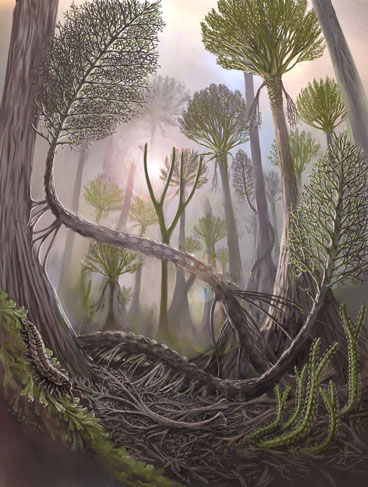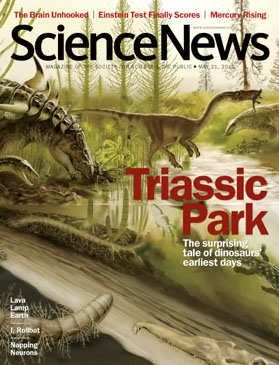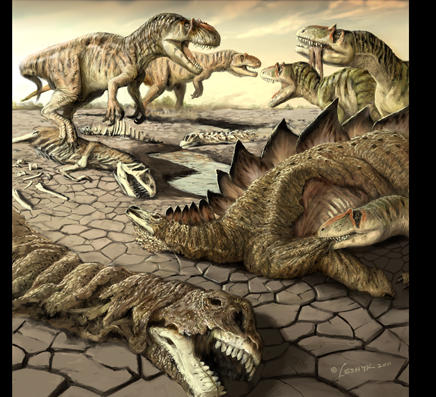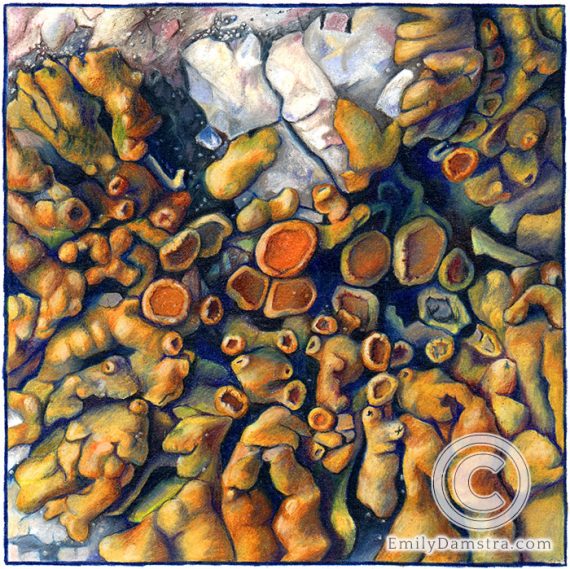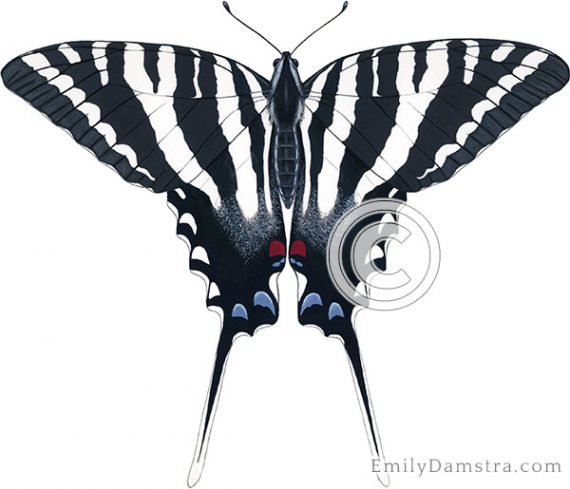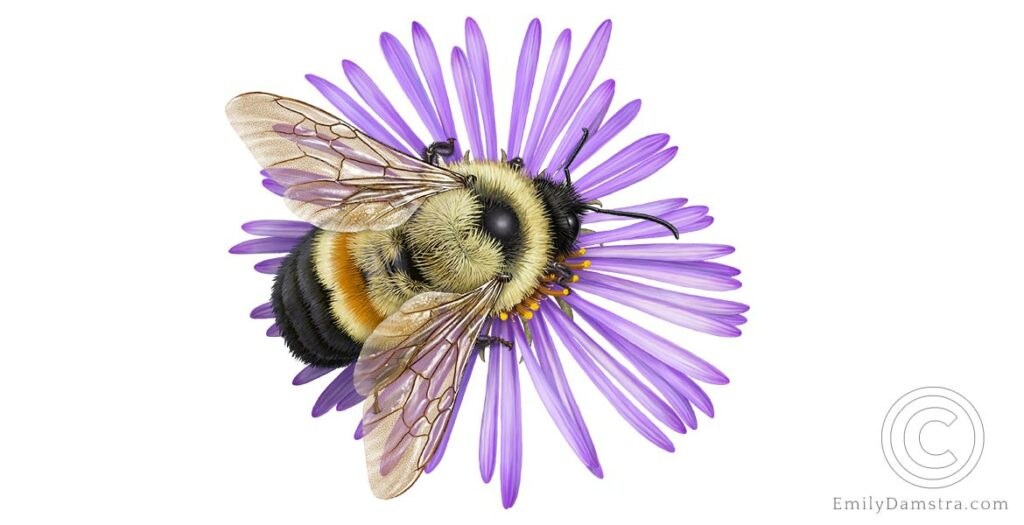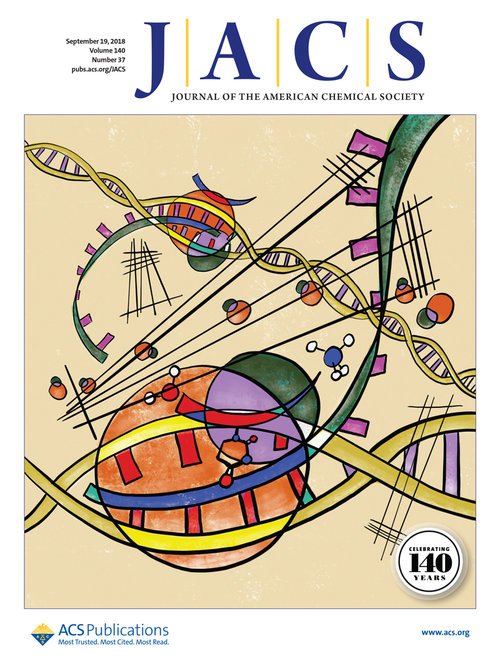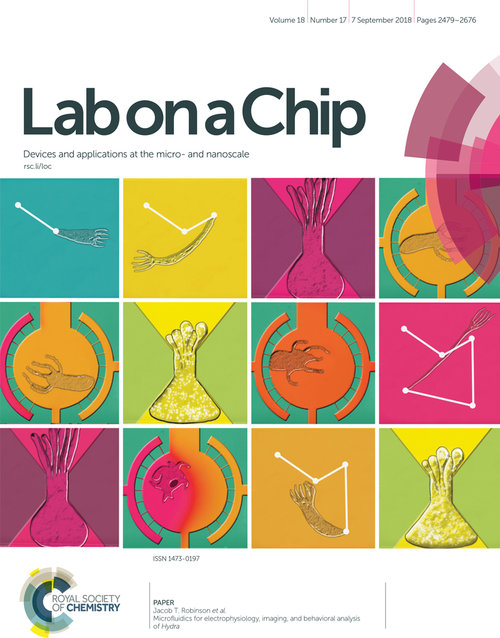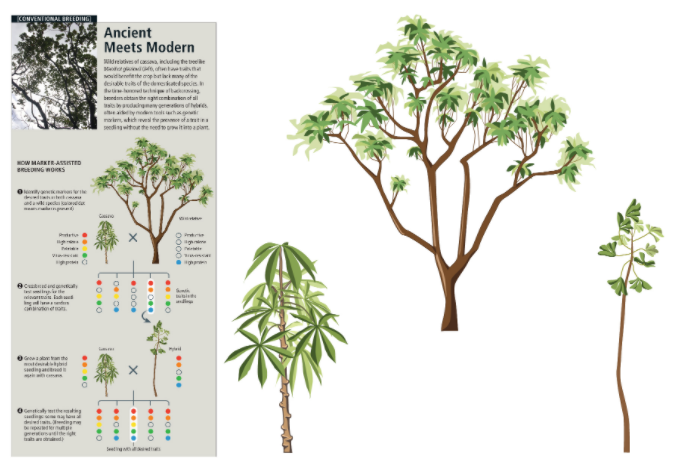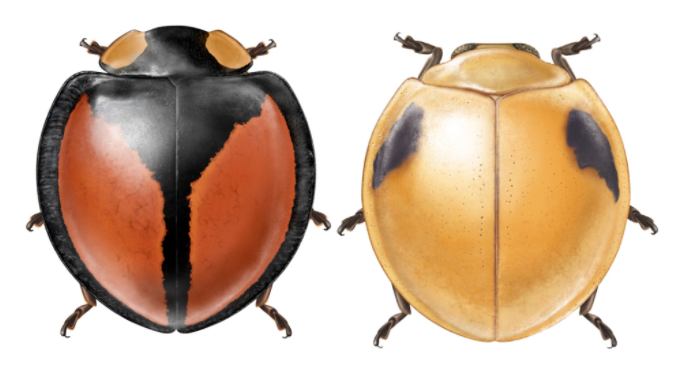Discussing with an artist how best to depict a mechanism or process — what to include and exclude, how molecules, stars or fossils should be positioned relative to one another — can help researchers to hone their hypothesis, reveal points of disagreement between authors and even identify holes in understanding.
Jyoit Madhusoodanan
In her article Science illustration: Picture perfect Jyoit Madhusoodanan wrote about the experiences different scientists had while working with (scientific) illustrators for their papers and how “enlisting the help of an illustrator can add impact to research papers and outreach projects”.
One of the mentioned scientists was the palaeobotanist Christopher M. Berry, who researched the Gilboa Fossil Forest in New York, the home of the Earth’s oldest forest, for years. The tree trunks fossils found there are roughly 380 million years old and the only known survivors of their type in the world.
The illustrator Victor Leshyk was commissioned to create an illustration of this forest, which was to accompany a 2012 research paper by Berry and his colleagues in Nature, the world’s leading multidisciplinary science journal since 1869. It also was to appear on the cover of the journal and Berry features it in his talks as well.
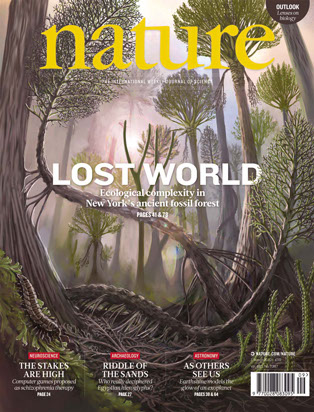
The digital oil painting titled ‘Lost Worlds’ was based on a sketch from researchers and made it possible for Berry to experience what the living forest might have looked like so many millennia ago.

Furthermore Madhusoodanan also talks about other scientists in different fields and how their cooperation with illustrators turned out. There are many benefits for scientists working with illustrators:
- Visually stunning images help raise the visibility of the scientist’s work and generate more online views
- Papers including scientific illustration are more likely to be shared digitally or written about
- They attract more students to a lab
- They attract a wider audience than non-illustrated papers
- Researchers are able to show a better the public-outreach, when applying for grants or funding
- Working with the illustrator can reveal gaps in knowledge and inspire new experiments
Illustrators mentioned in the article
Victor Leshyk
Emily Damstra
Mary O’Reilly
Jessica Huppi
Sources:
- Madhusoodanan, J. Science illustration: Picture perfect. Nature 534, 285–287 (2016). https://doi.org/10.1038/nj7606-285a
- Stein, W., Berry, C., Hernick, L. et al. Surprisingly complex community discovered in the mid-Devonian fossil forest at Gilboa. Nature 483, 78–81 (2012). https://doi.org/10.1038/nature10819
- Gilboa Fossil Forest https://en.wikipedia.org/wiki/Gilboa_Fossil_Forest
- nature journal https://www.nature.com/
